Very collectable Leyland Comet models from Dinky
Posted by Chris Graham on 16th August 2024
Mike Neale begins a two-part profile of Leyland Comet models, looking first at the contemporary Dinky model and reworking chipped originals.
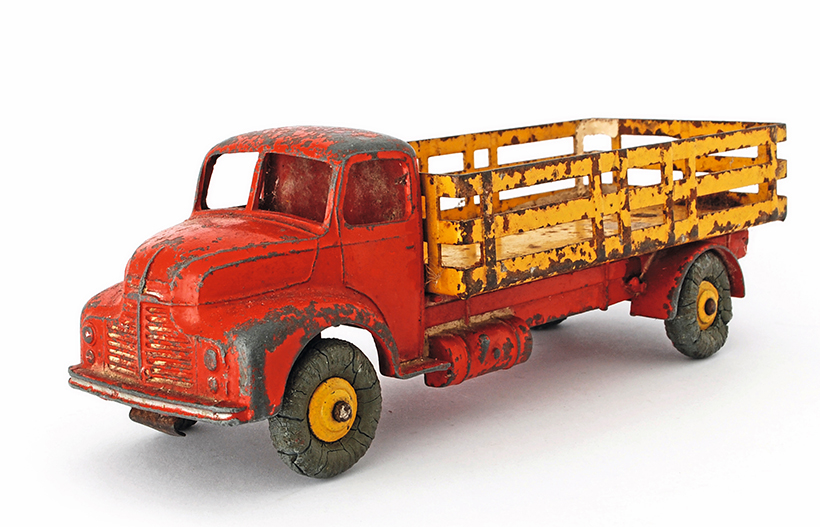
A very playworn Dinky Supertoys Leyland Comet Stake Truck No. 531.
Leyland began developing its post-war range during the last months of WW2. A new 9.8-litre engine was produced, the petrol fuelled P.600 or diesel O.600, for their bigger chassis. A smaller unit was needed for medium-weight lorries, but Leyland’s own engine plant didn’t have sufficient capacity to produce one. However, Napier of Liverpool had designed a straight-six, 4.92-litre engine during the war for military applications. Leyland approached them, agreeing a few modifications, and bought the rights to the engine, which Napier assembled.
The same was true of the cab, as Leyland was at capacity building the heavyweight cabs, Briggs Motor Bodies of Dagenham was contracted to supply proprietary, normal control cabs, the first mock-up being made in early 1946. Briggs supplied similar cabs, with different frontal treatments and door heights, for the Ford Thames ET6 and Dodge Kew.

Another typical play-worn Dinky Stake Truck in blue with a light brown back.
The prototype Leyland Comet was tested in summer 1946 though, unfortunately, got written-off in an accident in September at Gretna Green. A second prototype was hurriedly built. Briggs fell behind with the cab production, so although production of the Comet officially began in July 1947, they didn’t really become available in quantity until 1948.
The first type was the Comet 75, initially all right-hand drive, with left-hand drive offered from late 1948. There was a choice of two wheelbases – 14ft 2in typically for dropsides, platform lorries and rigid tankers, and 10ft 5in for tippers. A 9ft 2in wheelbase tractor unit followed in late 1948. The payload was 6.5 tons, or up to 10 tons for the tractor unit. The six-cylinder Napier engine could be petrol- (P.300) or diesel-powered (O.300).

Dinky Stake truck in red and yellow; a repainted example.
This was followed, in the summer of 1951, by the stronger and heavier Leyland Comet 90, with an increased payload of 7 tons, and three wheelbases – 15ft 3in, 14ft 2in or 10ft 5in, the latter also being used for tractor units. The diesel engine was uprated to 5.76-litres as the O.350. From 1953, an 8ft 7in wheelbase tractor unit was added with a Scammell coupling, and later one at 9ft 2in for gross weights of 17.85 tons.

A Dinky 532 dropside lorry with its original two-tone blue paint.
Bonneted Leyland Comet passenger buses and coaches also appeared from 1948, with a 17ft 8in wheelbase and the P.300 or O.300 engine, bodied by various firms, including Harrington, ECW Park Royal and East Lancashire Coachbuilders. There were 4×4 truck conversions developed with AWD (All Wheel Drive Company) produced from 1957 to 1962. Six-wheel conversions of the Comet were also carried out by several companies. Many Comets were exported, with some special versions developed for specific countries.
Dinky Toys
A very popular vehicle in the Dinky Supertoys diecast range was the bonneted Leyland Comet, which captured the shape of the Briggs cab very well. The scale was around 1/50. There was no glazing or interior to the models. Three body styles were produced.

A repainted Dinky dropside lorry in green and orange.
The first was Model No. 531, a lorry with a stake truck back introduced in 1949, later renumbered 931 in 1954 and then 417 in 1956, before being discontinued in 1959. Colours of 531 were a red cab and chassis with a yellow back, or light blue chassis cab with brown back. 931 was in dark blue with a dark yellow back, while 417 was also in dark blue with dark yellow back, or yellow with a light green back.
In 1952, a new version – No. 532 – appeared, a dropside lorry with a hinged tailboard, renumbered 932 in 1954 and 418 in 1956 and again produced until 1959. This had a green cab and chassis with an orange back, dark blue chassis cab with light blue back, or dark blue chassis cab with mid-blue back.
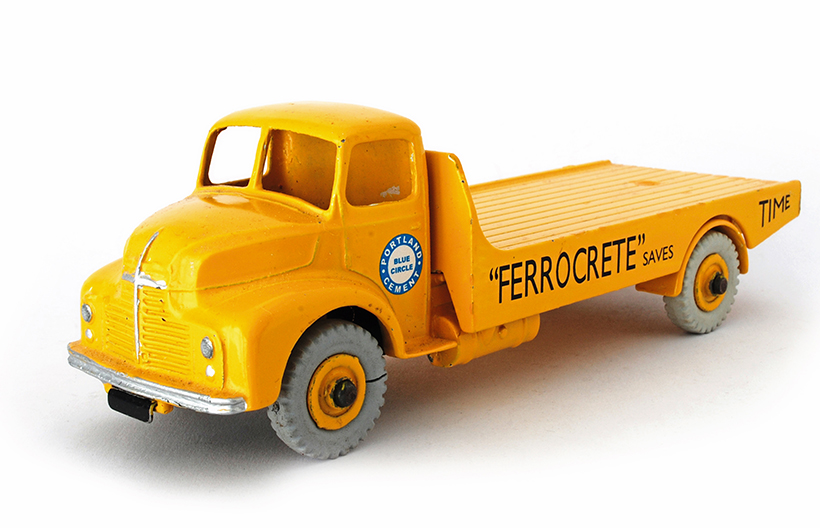
Dinky 533 Portland Cement lorry.
The final type, launched in 1953 as No. 533, 933 from 1954 and 419 from 1956, made until 1959, was a yellow Portland Cement lorry with a stylish deep-sided flatbed body proclaiming ‘Ferrocrete saves Time’ on one side and ‘Blue Circle, Portland Cement’ on the other, while the black-painted rear face had ‘Snowcem Cement Paint’ in white letters. The body design was an accurate reproduction of the real vehicles used by Portland Cement, even the curved shape up into the headboard, although Dinky didn’t paint the wings in dark blue as many of the real ones were, nor was there a (what would have been a vulnerable) headboard with ‘The Cement Marketing Company Ltd’ lettering that was fitted to some of the real lorries. Nonetheless, I think this is my favourite of the three types that Dinky made.
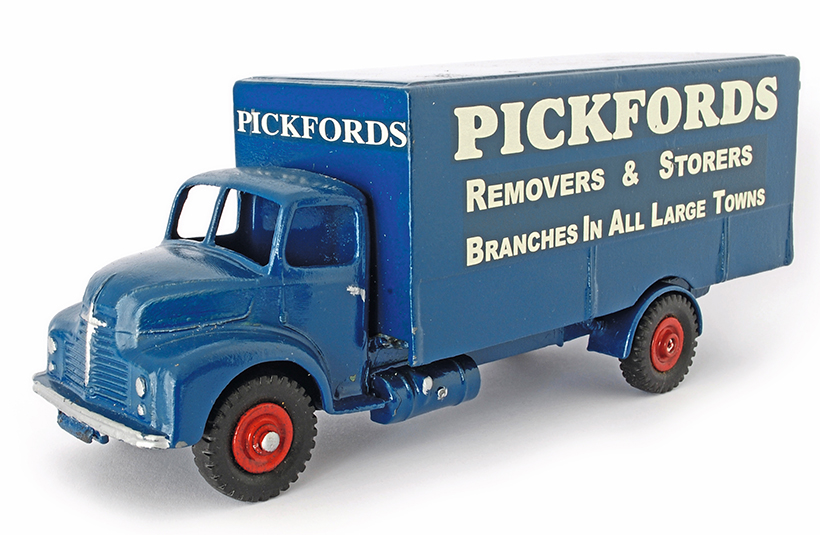
A Code 3 conversion into a Pickfords box van using all Dinky parts.
While mint and boxed Dinky Comets can still command good money, chipped and play-worn or repainted examples can be picked up for just a few pounds. This fact, plus the accurate shape of the Dinky cab and its 1/50 scale, make it a good basis for creating Code 3 conversions (ie not factory produced) of models that might have been. I have included a few here, with varying degrees of changes and added detail, to illustrate some possibilities.
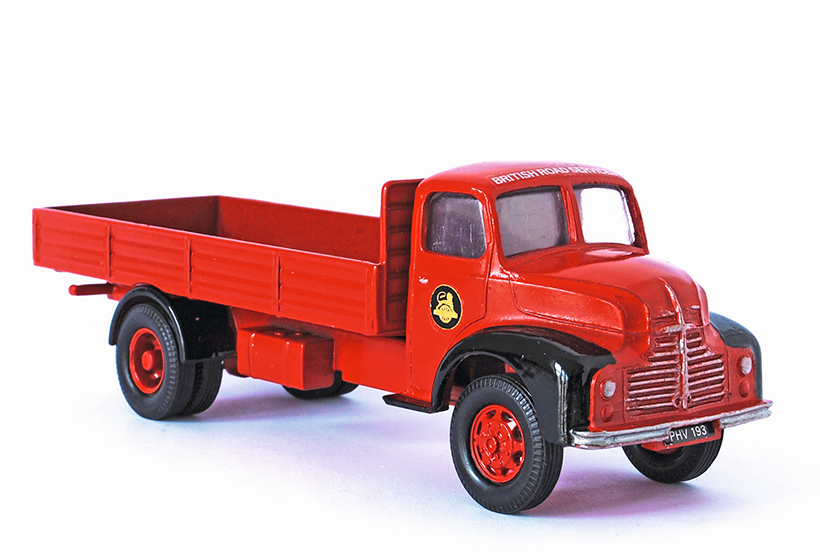
A modified Dinky dropside in BRS livery with glazing and Corgi wheels fitted.
The dark blue Pickfords lorry uses the box van body from the Dinky Bedford D-Series Pallet Jekta Van, so is one that Dinky could have produced from existing castings.
The red and black dropside lorry uses the standard 532 Dinky casting, repainted and finished in British Road Services livery, with added window glazing and more realistic Corgi Classics lorry wheels.
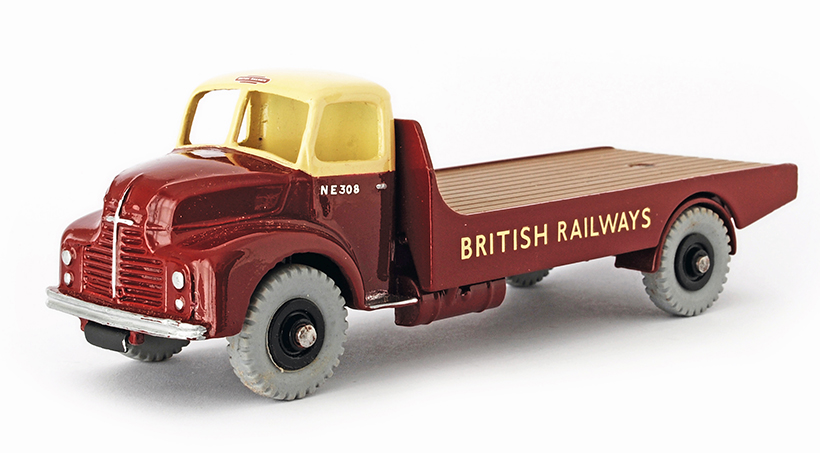
A Dinky 533 cement lorry repainted in British Railways livery.
A 533 cement lorry has been refinished in ‘blood and custard’ British Railways livery, which suits it rather well, although I don’t know that they ever ran Leyland Comets with that style of rear body.
A real vehicle that certainly did exist was a Leyland Comet articulated petrol tanker in red Mobilgas livery, recreated in model form by combining a 1960s Corgi streamlined tanker body with the Dinky Comet cab mounted on a short wheelbase tractor unit chassis.
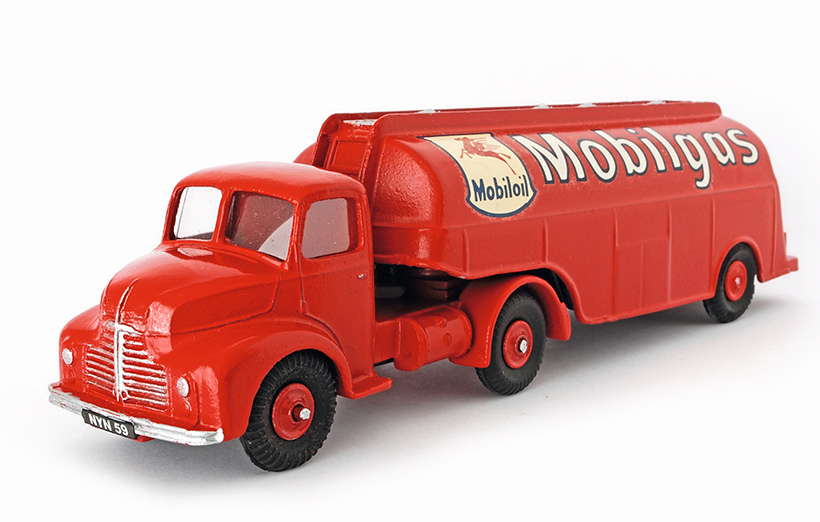
A Code 3 conversion into a Mobilgas tanker using Dinky and Corgi components.
Finally, there is a more detailed Shell-BP tanker, using the Dinky cab to which door mirrors, glazing, interior and detailed wheels have been fitted, mated to a rear, cylindrical tanker. Not one in my collection, but seen in the model display hall at the recent Classic & Vintage Commercials show at the British Motor Museum.

A detailed Shell-BP tanker conversion using the Dinky Leyland Comet cab.
This feature comes from the latest issue of Classic & Vintage Commercials, and you can get a money-saving subscription to this magazine simply by clicking HERE
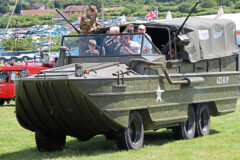
Previous Post
Interesting exhibits at the Chickerell Steam & Vintage Show
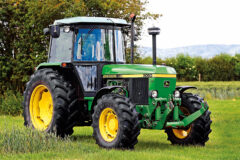
Next Post
Classic tractor becomes farming reality for enthusiast owner



